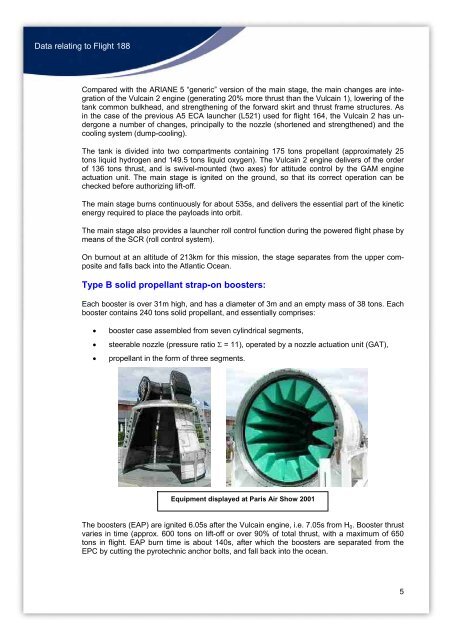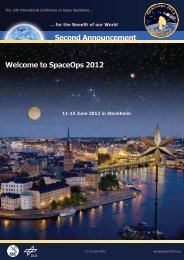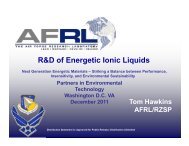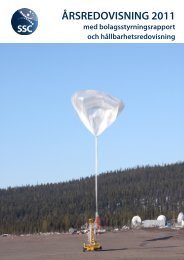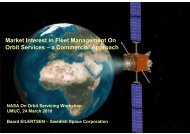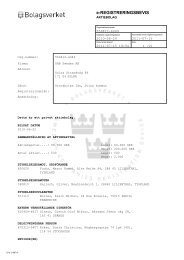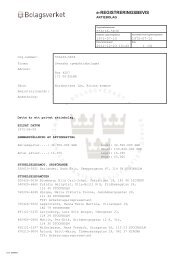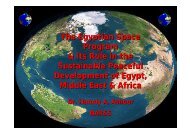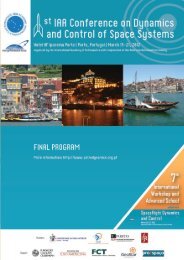Flight 188 - uppsagd
Flight 188 - uppsagd
Flight 188 - uppsagd
You also want an ePaper? Increase the reach of your titles
YUMPU automatically turns print PDFs into web optimized ePapers that Google loves.
Data relating to <strong>Flight</strong> <strong>188</strong>Compared with the ARIANE 5 “generic” version of the main stage, the main changes are integrationof the Vulcain 2 engine (generating 20% more thrust than the Vulcain 1), lowering of thetank common bulkhead, and strengthening of the forward skirt and thrust frame structures. Asin the case of the previous A5 ECA launcher (L521) used for flight 164, the Vulcain 2 has undergonea number of changes, principally to the nozzle (shortened and strengthened) and thecooling system (dump-cooling).The tank is divided into two compartments containing 175 tons propellant (approximately 25tons liquid hydrogen and 149.5 tons liquid oxygen). The Vulcain 2 engine delivers of the orderof 136 tons thrust, and is swivel-mounted (two axes) for attitude control by the GAM engineactuation unit. The main stage is ignited on the ground, so that its correct operation can bechecked before authorizing lift-off.The main stage burns continuously for about 535s, and delivers the essential part of the kineticenergy required to place the payloads into orbit.The main stage also provides a launcher roll control function during the powered flight phase bymeans of the SCR (roll control system).On burnout at an altitude of 213km for this mission, the stage separates from the upper compositeand falls back into the Atlantic Ocean.Type B solid propellant strap-on boosters:Each booster is over 31m high, and has a diameter of 3m and an empty mass of 38 tons. Eachbooster contains 240 tons solid propellant, and essentially comprises:• booster case assembled from seven cylindrical segments,• steerable nozzle (pressure ratio Σ = 11), operated by a nozzle actuation unit (GAT),• propellant in the form of three segments.Equipment displayed at Paris Air Show 2001The boosters (EAP) are ignited 6.05s after the Vulcain engine, i.e. 7.05s from H 0 . Booster thrustvaries in time (approx. 600 tons on lift-off or over 90% of total thrust, with a maximum of 650tons in flight. EAP burn time is about 140s, after which the boosters are separated from theEPC by cutting the pyrotechnic anchor bolts, and fall back into the ocean.5


